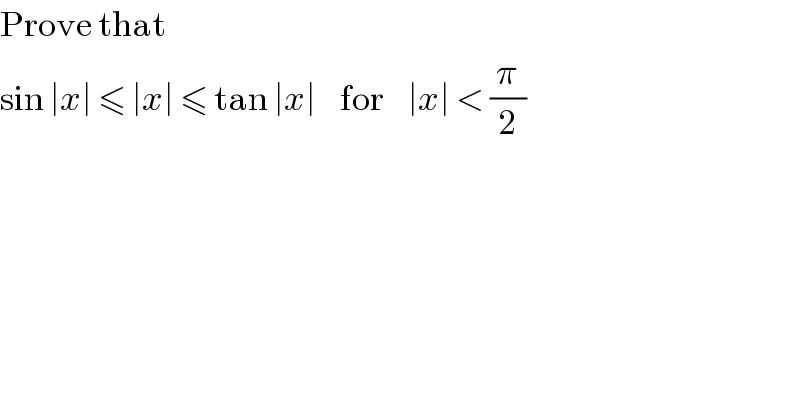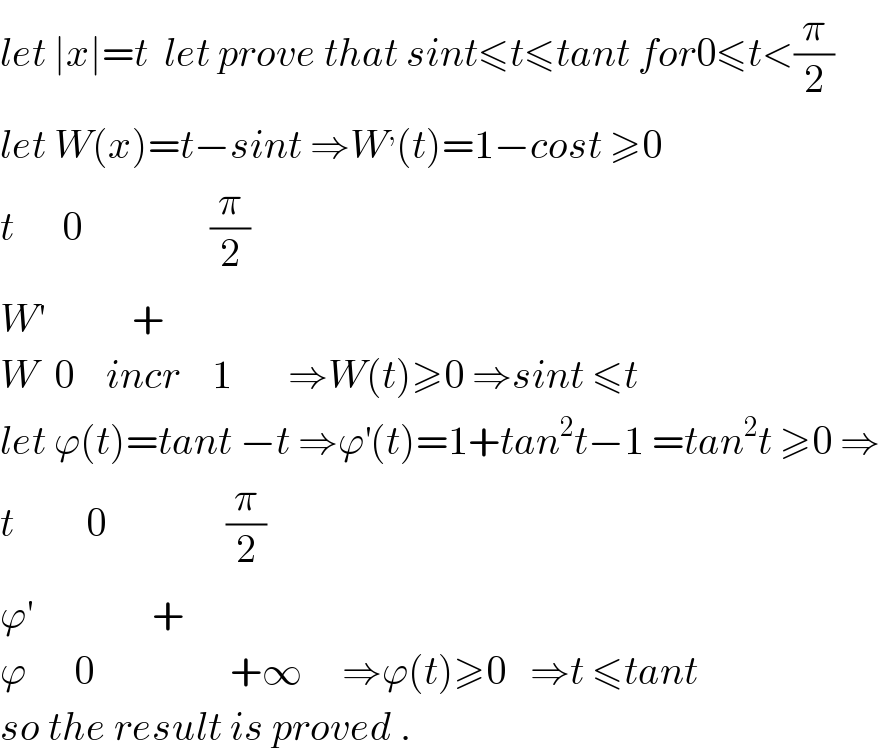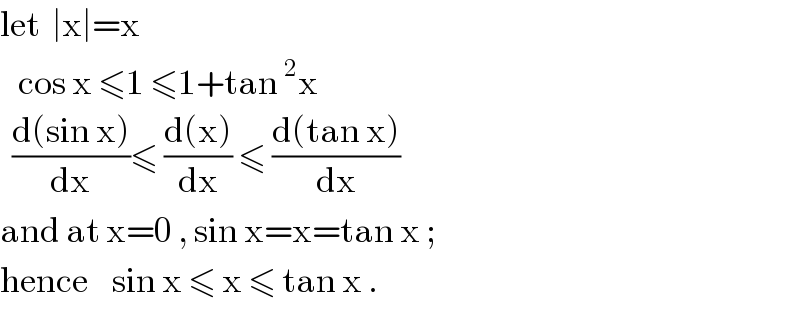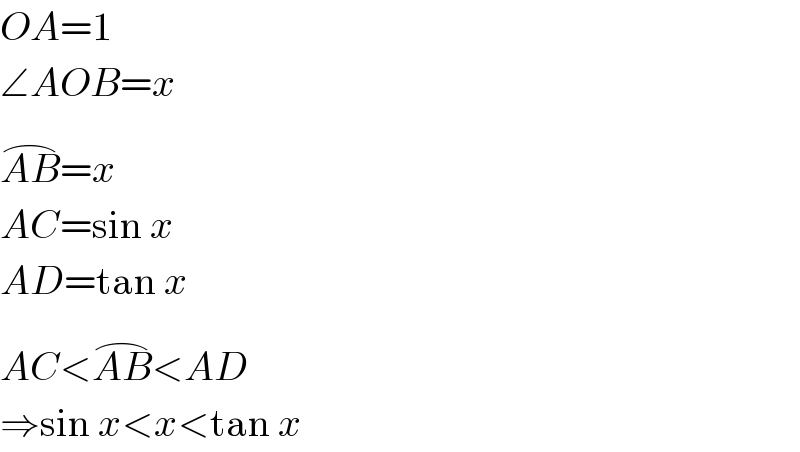
Question and Answers Forum
Question Number 56681 by Joel578 last updated on 21/Mar/19

Commented byAbdo msup. last updated on 22/Mar/19

Answered by ajfour last updated on 21/Mar/19

Answered by mr W last updated on 21/Mar/19

Commented bymr W last updated on 21/Mar/19

